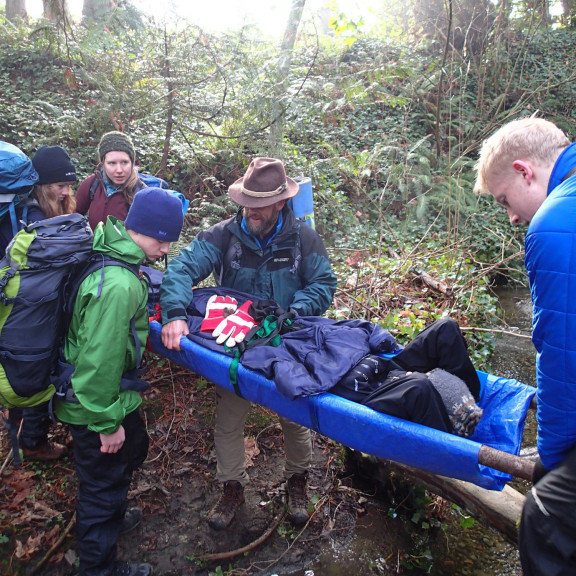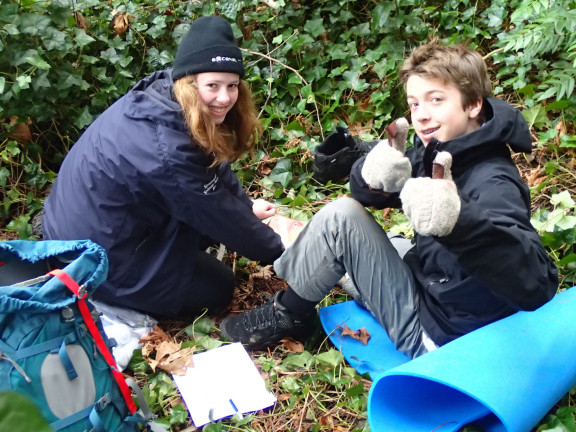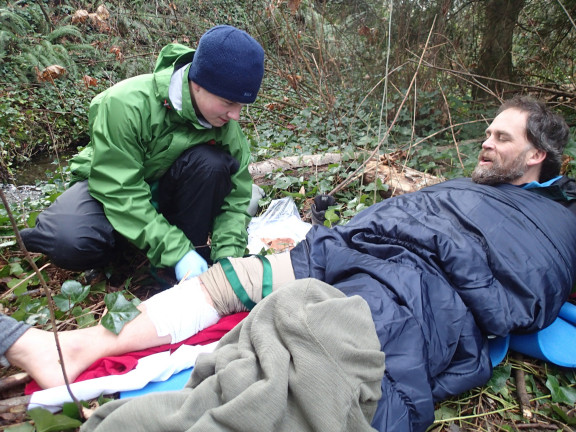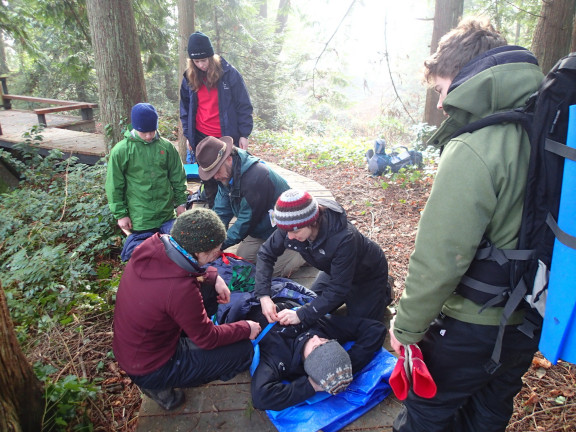50p

Wilderness First Aid 1
Over the last few weeks, 4 students, 2 staff, 1 alum and 1 guest participated in a 50 hour wilderness first aid course held on our campus. The course is designed to teach people how to deal with injuries in an environment where 911 may not be available, and where the arrival of emergency services may be many hours or days away.
Like any first aid course, students learn to recognize and treat life-threatening situations. The difference is that in the wilderness, many of the materials required have to be improvised, and plans on how to get the patient to help are often a necessity if emergency service won’t come to you. A key to this course is learning the urgency of a variety of situations so that a plan is made which provides the best possible outcome to the patient using the available resources (human and physical) without putting anyone at further risk. There may not be wisdom in calling for a helicopter rescue (a risky endeavor on many levels) if a patient has a broken arm. The arm could be easily splinted in the field and then the patient might be self-evacuated by kayak or on foot without any serious consequences. Of course, if that same patient has lost circulation in their fingers due to the fracture, perhaps the helicopter is justified.
Course participants became adept at completing a primary survey to assess if there is danger to patient and/or rescuer, and how to recognize and treat airway, breathing, circulation or deadly bleeding problems. They learned to pause, plan and then complete a secondary survey to gather detailed information and to ensure a complete understanding of the gravity of the situation. Injury assessment and sense of urgency were specific skills taught, learned and practiced hands-on. Students learned how to improvise important first aid materials such as splints, stretchers and running water in a wilderness environment. And they learned the importance of planning ahead before you venture out there to make sure you have what you need, and you know how to access help if something goes wrong.
Unique to a wilderness first aid courses is a lot of scenario work – students take turns playing the role of victim and with coaching on what symptoms to complain about, supplemented by expert makeup applied by our course conductor, Lindsay, we hammed it up for our rescuers, all the while lying in the cool, wet forested areas fringing the Brentwood campus. On our final course day, scenarios ranged from broken legs with protruding bones, which required a long stretcher carry, to twisted ankles, internal bleeding, dislocated fingers and a massive stroke. Material had to be improvised from what we had in our backpacks, and the scenario was not over until we had assessed the situation, planned treatment and evacuation if needed and then completed the treatment we could in the field. Sitting outdoors on an early Sunday morning in January while the rest of campus sleeps in, students learned what a difference it makes if your rescuer is able to get you onto a foam pad and cover you with extra clothing or a sleeping bag. This was experiential learning at its finest.
Although this course required a huge time commitment, it was rewarding and confidence building. Students Jacob N, Jacob M, Teagan W & Joe K showed strong skills in dealing with the variety of challenging scenarios. Each student must now write an online exam to pass the course, and when they do, they receive a 3 year certificate in wilderness first aid, and a 1 year certificate in CPR C. Good luck on the exam, and well done!
Mr. Dan Norman, Outdoor Pursuits
75p


